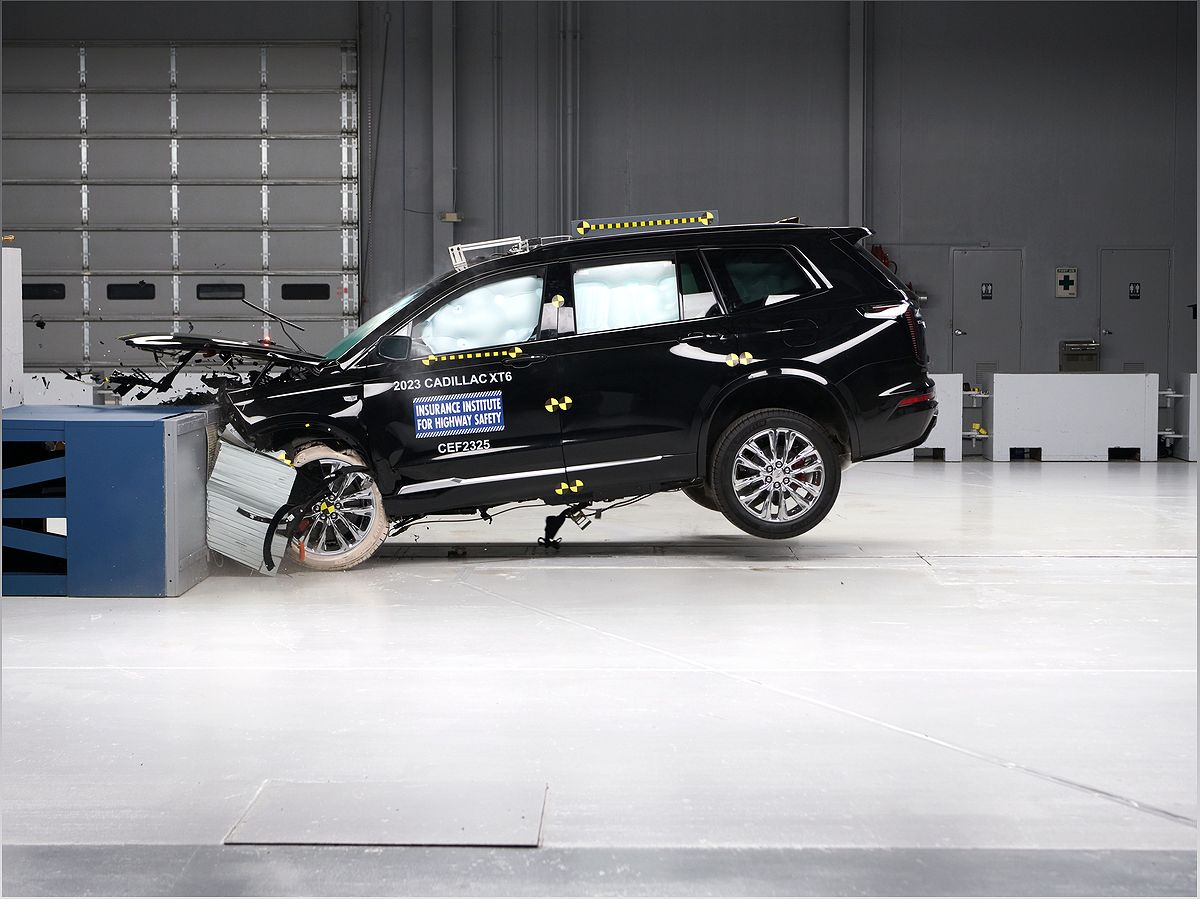In a recent crash study, Lincoln, Mercedes, and Volvo emerged as the top performers for back seat passenger safety in midsize luxury SUVs. On the other hand, Cadillac ranked the worst. The study revealed that the Cadillac XT6 earned a 'poor' score due to the potential for head, neck, and chest injuries. However, General Motors, the parent company of Cadillac, expressed confidence in the overall safety of the XT6 and acknowledged the study's findings. The Lincoln Aviator, Mercedes-Benz GLE-Class, and Volvo XC60 received 'good' ratings, with Volvo even achieving a flawless crash test. The Audi Q5 and Lexus RX were rated 'marginal,' while the Acura MDX and BMW X3 were deemed 'acceptable.' These results highlight the importance of protecting back seat passengers from 'submarining' and ensuring that the head and shoulder belts provide adequate safety. Overall, this study emphasizes the role of design in preventing injuries for belted back seat passengers. Stay informed and make informed choices when it comes to luxury SUVs and back seat passenger safety.
Top Performers: Lincoln, Mercedes, and Volvo
In the recent crash study, Lincoln, Mercedes, and Volvo emerged as the top performers for back seat passenger safety in midsize luxury SUVs. These brands prioritized the well-being of rear passengers and received 'good' ratings in the tests conducted by the Insurance Institute for Highway Safety (IIHS).
The Lincoln Aviator, Mercedes-Benz GLE-Class, and Volvo XC60 showcased their commitment to safety, with Volvo even achieving a flawless crash test. These vehicles demonstrated excellent protection for back seat passengers, ensuring that their heads remained safely away from the front seatback and that the shoulder belts stayed in place.
When considering a luxury SUV, it's crucial to prioritize the safety of all occupants, including those in the back seat. By choosing one of these top performers, you can have peace of mind knowing that your passengers are well-protected in the event of a crash.
The Disappointing Performance of Cadillac
Unfortunately, the Cadillac XT6 ranked as the worst performer in the crash study. It received a 'poor' rating due to the potential for head, neck, and chest injuries for back seat passengers.
The XT6 was the only vehicle in its category to earn such a low score. The crash test results revealed that the rear passenger dummy submarined beneath the lap belt, indicating a moderate risk of head or neck injuries and a high risk of chest injuries.
While General Motors, the parent company of Cadillac, expressed confidence in the overall safety of the XT6, it acknowledged the findings of the study and pledged to incorporate them into future designs. It's essential for Cadillac to address these safety concerns and prioritize the well-being of back seat passengers in their vehicles.
Other Performances: Acura, Audi, Lexus, and BMW
While Lincoln, Mercedes, and Volvo ranked as the top performers, other luxury SUVs had varying results in the crash study.
Acura MDX and BMW X3
The Acura MDX and BMW X3 received an 'acceptable' rating in the study. However, they still have room for improvement when it comes to rear passenger safety. The rear passenger dummy in both vehicles submarined beneath the lap belt, increasing the risk of injuries. Additionally, the rear passenger dummy's head came close to the front seatback in both vehicles, further elevating the risk of head injuries.
Audi Q5 and Lexus RX
The Audi Q5 and Lexus RX were rated as 'marginal' in the crash study. Both vehicles exhibited submarining, with the rear passenger dummy sliding below the lap belt. Back seat passengers in the Audi Q5 faced a slightly elevated risk of head or neck injuries, while those in the Lexus RX faced a more substantial risk of chest injuries.
These results highlight the importance of continuous improvement in rear seat safety design for all luxury SUV manufacturers. It's crucial for automakers to address the issue of submarining and ensure that rear seat passengers are adequately protected in the event of a crash.
The Changing Perception of Rear Seat Safety
Traditionally, rear seats were considered safer than front seats. However, times have changed, and the recent crash study challenges this perception.
According to Jessica Jermakian, a mechanical engineer and vice president of vehicle research at IIHS, rear seats are no longer inherently safer. The study's findings indicate that automakers need to focus on design to prevent injuries for belted back seat passengers.
This shift in perception is particularly relevant for those who frequently use ride-hailing services like Lyft and Uber. When choosing a luxury SUV, it's essential to consider the crash test data and prioritize the safety of rear seat passengers.
As automakers continue to prioritize safety and incorporate new design elements, we can expect further improvements in rear seat passenger protection. Stay informed and make informed choices when it comes to luxury SUVs and the safety of your passengers.

